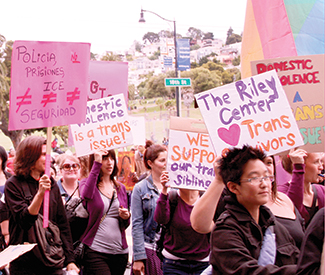A California appellate court issued a ruling this week [Mon/11] opening up San Francisco Police Department personnel files to prosecutors, who then must disclose to defense attorneys when officers have criminal or other misconduct issues that may affect their credibility when testifying during trials.
The decision builds on the 1963 Brady v. Maryland US Supreme Court case, which requires police to share all potentially significant evidence with the prosecutors. But the SFPD hasn’t always done so to an extent that passed legal muster, citing officer confidentiality issues, so the court has now found that prosecutors must have direct access and bear the responsibility of disclosure.
The San Francisco District Attorney’s Office resisted the change, joining with the SFPD to appeal the lower court ruling in Superior Court of San Francisco vs. Daryl Lee Johnson, a defendant whose attorney has sought more information about the officers testifying against him. The appellate court supported the earlier ruling and said that any relevant documents must be shared.
The appellate justices specified that, since the police are part of the prosecution, documents may legally be shared without breaking any officer confidentiality rules. SFPD did not immediately return calls for comment, but we’ll update this post if and when we hear back.
In a press release from the San Francisco Public Defender’s Office, Public Defender Jeff Adachi said, “A fair trial requires that before a police officer testifies, any history of dishonest or abusive behavior is turned over to the defense…[The prosecutors] are ultimately responsible for providing any information about a police officer that could exonerate an innocent person.”
The Guardian spoke to Adachi about the implications of this decision. While the ruling will place fewer obstacles in the way of obtaining evidence and will create a clearer process, Adachi is concerned about accountability since there’s no way to know that the prosecutors are making all relevant documents available. But he said the ruling is still a step in the right direction.
“This decision means that the defense will have access to information to a case where police officers’ credibility is concerned,” Adachi said. “If the officer has been disciplined for lying [or] use of excessive force…that reflects on the police officer’s credibility.”
According to Acachi, around 100 cases have been dismissed due to lack of evidence, and 90 officers involved in various cases had flawed records.
Monday’s ruling will play a role in the case that inspired it. Daryl Lee Johnson was charged with two felonies in November 2012. His investigating officers had records of misconduct, but their files were not available to Johnson’s attorney. This ruling will even out the playing field and help ensure that Johnson trial and others are truly fair.
Adachi told the Guardian that two court decisions were preventing defense attorneys from accessing misconduct files.
“The Johnson case establishes that yes, they can,” Adachi said, noting that the ruling will also help defense attorneys in other cases going forward.






